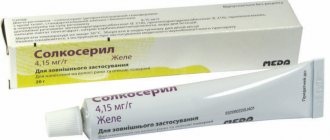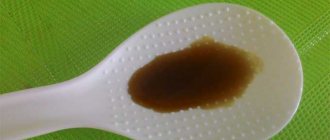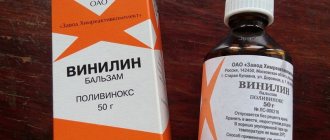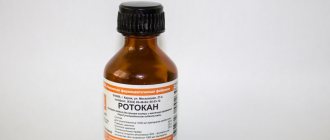Trichopolum is a widely used drug in the treatment of gynecological and skin diseases. It is prescribed both independently and in complex therapy of mixed infections in women and men. To understand how to properly use the drug in treatment, it is important to know what diseases Trichopolum helps and how it works.
Description of the drug
Trichopolum is an antimicrobial drug with antiparasitic activity, but is not an antibiotic.
The main component in all types of the drug is metronidazole. Available in the form:
- Tablets for internal use. They contain a chemical substance in a dosage of 250 mg, as well as: magnesium stearate, molasses, starch and gelatin. Packaged in cardboard packages of 20 tablets along with instructions.
- Solution for intravenous administration. It contains: sodium chloride, water, citric acid monohydrate and sodium hydrogen phosphate. In pharmacies you can find ampoules with a dosage of 100 mg per 20 ml and bottles with a dosage of 500 mg per 100 ml.
- Vaginal tablets. Additionally contain: cellulose, crospovidone, silicon dioxide, povidone and stearic acid. The concentration of metronidazole is 500 mg, packaged in 5 or 10 pieces per package.
The effect of the drug is to penetrate the cell of a microorganism and disrupt its vital functions, followed by death. It has shown effectiveness in the fight against protozoa, anaerobic bacteria and some gram-negative and gram-positive organisms, for example, lamblia, trichomonas, gardnerella.
It is stored for three years from the date of issue at a temperature of no more than 25 °C.
What diseases does Trichopolum help with?
The main indications for prescribing the drug are infections of important human organs and tissues:
- Respiratory system.
- Skin, joints and soft tissues.
- Mucous membranes of the oropharynx, genitals and intestines.
What Trichopolum will help with:
- Sepsis resulting from infection of postoperative wounds.
- Bacterial prostatitis in acute or chronic form.
- Chlamydia affecting the conjunctiva, genitals or skin.
- Infections of the genitourinary system and digestive organs caused by E. coli.
- Demodicosis of the skin.
- Amoebiasis.
- Giardiasis.
- Duodenal ulcer.
The properties of metronidazole included in the composition are widely used in the prevention of complications after surgical interventions: abdominal operations, abortion. In the hospital, preference is given to infusion administration, and at home treatment continues with tablets.
To prescribe the drug, you need to confirm the diagnosis and determine the sensitivity of microorganisms to metronidazole.
What does it treat in men?
In men, Trichopolum is used for:
- Alcohol addiction.
- Pancreatitis.
- Gonorrhea.
- Urethritis.
- Balantidiasis.
- Stomach ulcer.
- Prostatitis of any origin and form.
For trichomoniasis, the diagnosis must be confirmed by smear examination.
What does it treat in women?
Gynecologists often prescribe Trichopolum to women for the following infectious diseases:
- Vaginitis, colpitis.
- Endometritis.
- Chlamydia and gonorrhea.
- Cystitis.
- Inflammation of the ovaries.
- Vaginal trichomoniasis.
Depending on the pathology, a treatment regimen and dosage are selected.
Trichopolum
Trichopolum ®
(lat.
Trichopol
®) is an antibacterial antiprotozoal drug. The active ingredient is metronidazole.
Dosage forms of Trichopolum
Trichopolum is available in the following dosage forms:
- oral tablets containing 250 mg metronidazole
- vaginal tablets containing 500 mg metronidazole
- solution for infusion in ampoules of 20 ml containing 100 mg of metronidazole per ampoule (or 5 mg of metronidazole in one ml of solution)
- solution for infusion in 100 ml polyethylene bottles containing 500 mg of metronidazole in an ampoule (or 5 mg in 1 ml of solution)
Trichopolum activity against pathogenic microorganisms
Trichopolum is active against many pathogenic microbes, including:
- protozoa: Trichomonas vaginalis, Giardia intestinalis, Entamoeba histolytica, Lamblia spp.
- bacteria: Bacteroides fragilis, Bacteroides ovatus, Bacteroides thetaiotaomicron, Bacteroides vulgatus, Parabacteroides distasonis, Fusobacterium spp., Veillonella spp., Prevotella bivia, Prevotella buccae, Prevotella disiens, Eubacterium spp., Clostridium spp., Peptococcus spp., Peptostreptococ cus spp., Gardnerella vaginalis
Trichopolum is not active against: Actinomyces spp., Mobiluncus spp
.,
Propionibacterium acnes
.
Indications for use of trichopolum
- infections caused by protozoa:
- trichomoniasis
- giardiasis
- amoebiasis
- amoebic liver abscess
- peritonitis
- abscesses of the abdominal cavity and liver
- endometritis
- abscesses of the ovaries and fallopian tubes
- postoperative complications
- pneumonia, pleural empyema, lung abscess
- meningitis, brain abscess
- skin infections
- bone infections
- sepsis
- endocarditis
- on the colon
- during appendectomy
- during gynecological operations
in Helicobacter-associated gastric and duodenal ulcers, as part of complex therapy
Trichopolum for eradication of Helicobacter pylori
Trichopolum is sometimes prescribed as one of the antibiotics as part of complex therapy for the eradication of Helicobacter pylori
.
Trichopolum is not used in the eradication of Helicobacter pylori
outside of special regimens, without drugs that reduce gastric acidity.
Trichopolum is also not used in any form for the treatment of gastric and duodenal ulcers and gastritis in the absence of Helicobacter pylori in the patient.
According to the Maastricht Agreements, the active substance trichopolum, metronidazole, is recommended as one of the antibiotics for the eradication of
Helicobacter pylori.
However, in Russia, due to the very wide and not always correct use of metronidazole, the level of resistance to metronidazole is almost twice as high as the European average: 55.5% in Russia and 25.5% in Europe (Maev I.V., Vyuchnova E.S., Shchekina M.I.).
In Russia, it is recommended to use nifuratel in treatment regimens instead of metronidazole (Shcherbakov P.L.). Also, according to modern Russian Standards for the diagnosis and treatment of acid-dependent and Helicobacter pylori-associated diseases, trichopolum is allowed only in one of the “second-line” regimens (used if the patient had unsuccessful treatment of Helicobacter pylori
according to one of the “first-line” regimens): trichopolum according to 500 mg 3 times a day, bismuth tripotassium dicitrate 120 mg 4 times a day, tetracycline 500 mg 4 times a day and one of the proton pump inhibitors in a standard dosage (omeprazole 20 mg, lansoprazole 30 mg, pantoprazole 40 mg, esomeprazole 20 mg , rabeprazole 20 mg 2 times a day) for 10–14 days.
Methods of using trichopolum and dosage
Trichopolum tablets are taken orally without chewing during or after meals or with milk:
- Trichomonas vaginalis
infection - 250 mg 4 times a day for 5 days or 2 g once or 250 mg 2 times a day for 10 days - for Entamoeba histolytica
: - adults - 750 mg 3 times a day for 5–10 days
- children - 35–50 mg per kg of body weight per day, in three divided doses for 10 days
infection , the daily dose is divided into two doses, the duration of treatment is 5–10 days, the repeated course is after 4–6 weeks, the dose depends on age:
- children from 2 to 5 years old - 250 mg per day
- children from 6 to 10 years old - daily dose - 375 mg
- patients over 10 years old - 500 mg per day
- children under 12 years of age, including newborns - 7.5 mg of trichopolum per kg of body weight 3 times a day
- patients over 12 years old - 250–500 mg 3 times a day
- children from 0 to 5 years - 5 mg of trichopolum per kg of weight every 8 hours for 2 days
- children from 5 to 12 years old - 125 mg every 8 hours for 2 days
- patients over 12 years old - initially 1 g once, then 250 mg 3 times a day
Vaginal tablets are prescribed for adults. The Trichopolum tablet is removed from the packaging by cutting the film along the contour of the tablet, moistened with boiled cooled water and inserted deep into the vagina. Trichopolum therapy lasts no more than 10 days and is repeated no more than 2-3 times a year. The dose and duration of use depends on the disease:
- for trichomonas vaginitis, one vaginal tablet per day is used for 7-10 days in combination with taking trichopolum tablets orally
- for nonspecific vaginitis and bacterial vaginosis, one vaginal tablet per day for 7 days, if necessary in combination with oral trichopolum tablets
Use of Trichopolum during pregnancy and breastfeeding
Trichopolum is contraindicated in the first trimester of pregnancy; in the second and third trimesters it should be taken with caution only if the benefit to the pregnant woman outweighs the risk to the unborn child, given that metronidazole crosses the placenta.
FDA category of effect on the fetus is B. Trichopolum (metronidazole) is excreted into human milk, creating concentrations similar to those in blood plasma. May impart a bitter taste to breast milk. To exclude the effect of Trichopolum on the child, breastfeeding while taking Trichopolum and for another 2 days after the end is not recommended.
general information
According to the pharmacological index, trichopolum belongs to the groups “Other synthetic antibacterial agents” and “Medicines for the correction of disorders in alcoholism, toxic and drug addiction”, according to the ATC - to the subgroup “J01XD01 metronidazole” of the group “Imidazole derivatives”, as well as to the subgroup “A01AB17 metronidazole "Group "A01AB Antimicrobials for local treatment of diseases of the oral cavity."
Trichopolum has contraindications, side effects and application features; consultation with a specialist is necessary.
Company manufacturer
trichopolum - Polpharma, Poland (JSC Akrikhin).
On the website gastroscan.ru in the literature catalog there is a section “Antibiotics used in the treatment of gastrointestinal diseases”, containing articles on the use of antimicrobial agents in the treatment of diseases of the digestive tract.
Instructions for medical use of trichopolum
Instructions for medical use of various dosage forms of Trichopolum from the manufacturer (pdf):
- "Trichopol", tablets containing 250 mg of metronidazole
- "Trichopol", solution for infusion containing 5 mg of metronidazole in 1 ml
- "Trichopol", vaginal tablets containing 500 mg of metronidazole
Other medicines containing the active ingredient metronidazole
Bacimex, Deflamon, Klion, Metrovagin, Metrogyl, Metroxan, Metrolacare, Metron, Metronidazole, Metronidazole IV Brown, Metronidazole Nycomed, Metronidazole-AKOS, Metronidazole-UBF, Metronidazole tablets 0.25 g, Metronidal, Metroseptol, Orvagil, Rosamet, Rozeks, Siptrogil, Tricho-PIN, Trichobrol, Trichosept, Flagyl, Efloran. Back to section
Instructions for use
Instructions for using Trichopolum tablets provide several options:
- Trichomonas infections are treated simultaneously in both partners. Take 1 tablet twice a day after meals. Women are advised to additionally administer suppositories once a day. The duration of the course is at least 10 days.
- In the treatment of peptic ulcers, 250 mg is prescribed twice a day after meals.
- For bacterial vaginitis, an increased dosage of medication is prescribed - up to 1 g per day.
- For anaerobic infections – 1.5 g.
In each case, treatment must be prescribed by a doctor. In patients with impaired renal function, the dosage is reduced by three times.
According to the instructions for using Trichopolum suppositories, they need to be moistened in boiled water before administration. Treatment is prescribed in combination with conventional tablets.
One vaginal tablet is administered once a day for vaginitis caused by Trichomonas, as well as for infectious and nonspecific inflammation of the vagina.
The course of therapy is no more than 10 days and no more than 2-3 times a year.
The solution is prescribed in a dose of 1 g, administered through the system intravenously over 30 minutes. The maximum permissible dose per day is 4 g. Children under 12 years of age are prescribed a dose based on calculations: 7.5 mg per 1 kg of weight.
Trichopolum can be taken with other antibiotics; their use enhances the antimicrobial effect.
Recommendations for gum disease
Recommendations for inflammation of the gums to follow for 14 days:
1. A new toothbrush of medium hardness, if subsequent pain occurs while brushing your teeth, change to soft bristles
2. Toothpaste based on medicinal herbs (“Forest balm”, “Lacalute active”, “Paradontax”)
3.Gum massage
4. Rinse the mouth with decoctions of medicinal herbs (chamomile, calendula) or “Rotokan” (2 drops per 1 cup of water)
5. Rinse the mouth with a solution of “Chlorhexidine” 0.02%
6. Gel for gums “Metrogil-Denta” after brushing teeth on the gums and periodontal pockets using cannulas (teach the patient or apply during appointments with a dentist)
For chronic recurrent inflammation and bleeding of the gums, additionally:
1. To strengthen blood vessels and reduce bleeding, vitamin “Aevit” is prescribed
2. Metronidazole or Trichopolum 2 times a day, 1 tablet after meals for 7 days (for gastrointestinal diseases while taking antibiotics, Linex is prescribed, 1 capsule 2 times a day;
for chronic candidiasis while taking antibiotics, “Flucostat” is prescribed, 1 capsule on the 1st day of taking the antibiotic and the last)
Physiotherapeutic treatment with the Optodan laser (prescribed in the absence of cancer or glandular diseases):
1. With 1-2 sessions, mode No. 1 for 5 minutes (anti-inflammatory effect)
2. From 3-7 sessions, mode No. 1 for 3 minutes (anti-inflammatory effect)
3. From 8-12 sessions, mode No. 2 for 3 minutes (regenerative effect)
Recommendations after periodontal surgery.
1. Before the operation, professional oral hygiene must be performed 1-2 days before the operation.
2. You must take medications before and after surgery as recommended by your doctor. When taking medications, you should not consume alcoholic beverages or other medications without the consent of your doctor.
3. After surgery, minor bleeding may be observed for 1 - 2 days; if there is severe bleeding, immediately contact your doctor.
4. Edema of varying severity is an inevitable consequence of surgical intervention; it goes away on its own starting from 3 days after surgery. To reduce the severity of swelling, it is necessary to apply ice to the cheek in the area of the operation during the first 4 - 5 hours after surgery, taking 15 - 20-minute breaks every half hour.
5. Take recommended pain relievers as needed.
6. For 3 days after surgery, it is necessary to reduce physical activity. Avoid running or high-impact activities. You are not allowed to visit the swimming pool, bathhouse or sauna.
7. In the first 7 days after surgery, to maintain hygiene, gently rinse your mouth with warm water after each meal. Three times a day you need to rinse your mouth with a disinfectant solution prescribed by your doctor, according to the instructions.
8. Avoid smoking for at least 72 hours before and after surgery, or stop smoking altogether, as smoking increases the likelihood of complications.
9. If there are stitches, they will be removed by the dentist during your follow-up visit in 7 to 14 days.
Contraindications and side effects
Trichopolum tablets are prohibited from being prescribed to children under three years of age, pregnant women in the first trimester and during lactation. If it is necessary to use it during breastfeeding, it should be stopped for the duration of treatment.
Also contraindicated are:
- Severe pathologies of the liver and kidneys.
- Epilepsy.
- Disturbances in the functioning of the nervous system caused by organic changes.
- Leukopenia.
- Allergic reactions and hypersensitivity.
When undergoing a course of therapy, undesirable effects from the action of Trichopolum may occur:
- Malfunction of the digestive system (pancreatitis, bitter taste in the mouth).
- Nervous system disorders (headache, decreased visual acuity, dizziness and loss of coordination).
- Decrease in the number of platelets and red blood cells.
- In case of intolerance - allergic reactions, up to anaphylactic shock.
- Local reactions – burning, itching, frequent urination.
An overdose of the drug may cause vomiting, decreased white blood cell levels, and neuropathy.
During therapy with Trichopolum, it is important to avoid any amount of alcohol. And when treating a genital infection, abstain from sexual activity.
Antibiotics in dentistry for flux
Flux is an infectious and inflammatory process in the oral cavity, usually caused by untreated dental caries. And where there is a bacterial infection, there is a place for treatment with antibiotics. But antibiotics for gumboils should be taken exclusively as prescribed by the dentist and exclusively as part of a comprehensive treatment.
Some patients believe that swollen cheeks, swollen gums and toothache (which are the main symptoms of gumboil) can be successfully relieved with compresses, warm herbal rinses and antibiotics of their choice. Unfortunately, such health experiments end disastrously, because flux causes purulent melting of the periodontal tissues, and this is always fraught with very serious complications.
At the first symptoms of the disease, you should contact a dentist, who will conduct a diagnosis, identify the tooth that has become the source of the problem and treat it or remove it, according to indications. Then, if necessary, the doctor will perform drainage to ensure the drainage of pus, and only then will prescribe medications to eliminate the bacterial infection and speed up the healing process. That is, antibiotics in dentistry for flux are widely used, but only as maintenance therapy and as a component of complex treatment. The main treatment for flux is only surgical, and every patient needs to remember this.
It is permissible to begin treatment by prescribing antibiotics for flux only when the abscess has not yet formed and the inflammatory process is in the initial stage. But at this stage, it is rarely possible to detect flux - and primarily because patients do not go to the doctor with complaints. Usually, the dentist is able to detect the onset of the disease only by chance, during a routine examination or treatment of other diseases of the oral cavity.
By the way, those patients who read this text in the hope of finding an indication of which antibiotics are used in dentistry for flux will have to be disappointed - there will be no specific names. In each specific case, the doctor prescribes the drug individually, based on the general clinical picture and the characteristics of the patient’s body. In addition, the domestic patient, intimidated by years of harsh Soviet dentistry, at the slightest opportunity seeks to be treated at home, without going to the doctor. And the list of drug names will most likely be perceived not as reference information, but as a ready-made recipe in case of gumboil.
Analogs and price
A similar composition has: Gravagin, Metrogyl, Metronidazole, Efloran, Flagyl.
The price of Tripohol varies depending on the dosage form. Tablets cost from 66 rubles, vaginal suppositories - from 285 rubles, the solution is not available for free sale.
Thus, this drug has a wide spectrum of action, low price and proven effectiveness. However, it is not without side effects in the form of a bitter taste and a negative effect on the intestinal microflora.









